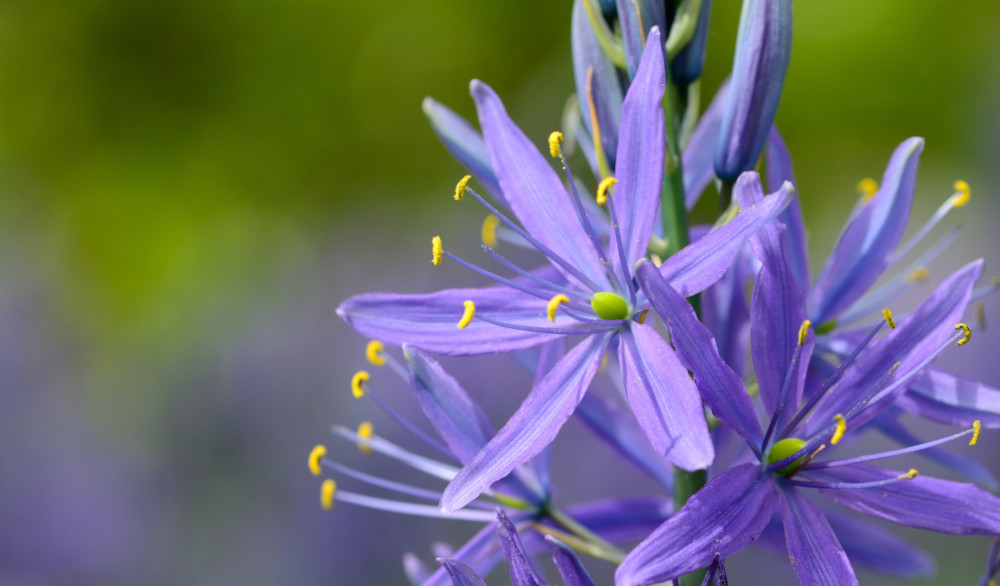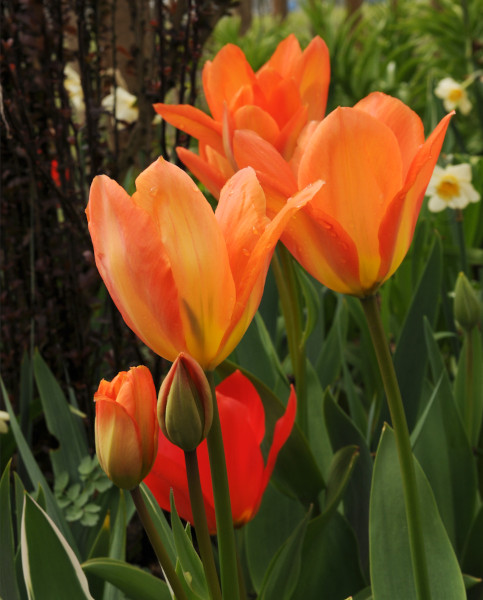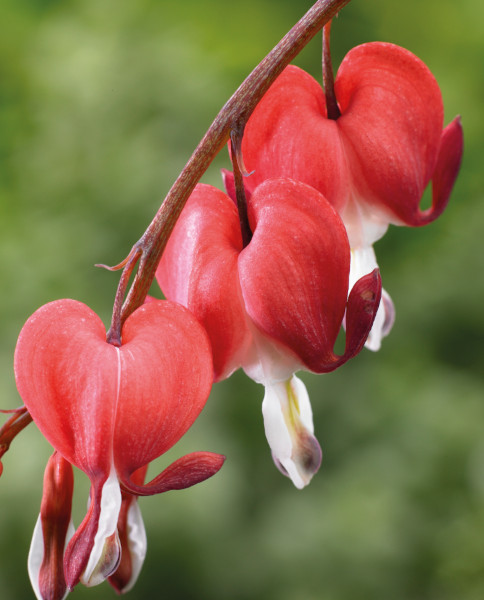How to grow Camassia
Camassia are bulbous perennial plants with striking, firework-like, star-shaped flowers and narrow linear leaves that adorn thick, majestic stems throughout spring. Commonly known as Wild Hyacinth, they make the perfect companion plants to lower growing plants and shrubs complementing any garden with undulating architecture. They also add substance to indoor arrangements.
Camassia are a fine addition to flower beds and borders within a cottage, wildflower or informal garden setting. Native to Northwest America, they make an equally fine sight when naturalised in long grass or in a more formal planting scheme. Camassia can grow to an approximate height of 30cm-90 and a spread of 20cm dependent on variety.

Key Information
Soil pH
Position
Hardiness


Where & when to plant Camassia
Camassia are perennials, growing from small, pointed bulbs. Plant between September and November in moist, well-drained soil as they like damp conditions to thrive. They will even grow in heavy soil although it is important to ensure that the soil drains well as bulbs will rot if they are waterlogged. Inappropriate soil can be amended with organic matter such as compost, ground bark or old manure to improve areas which are not well-drained.
Choose a site in full sun or partial shade and plant your bulbs around 10cm deep and 15-20cm apart with the points facing upward. Cover with soil and water thoroughly and deeply to set the soil securely.
Camassia will happily naturalise in grass and even on sloping banks - providing they are kept moist. However, these will tolerate drier conditions when dormant in late summer and autumn therefore stop watering once they begin to fade. Let the foliage die back naturally so do bear this in mind when planting, as it is likely to be mid-late summer before the foliage can be removed. If this may cause you an issue, then select plants which come to the fore after Camassia to disguise the fading leaves; perhaps Astrantia, Achillea or Lupins. Alternatively, grow in a container which can be tucked out of sight when flowers are spent, and the foliage is fading.
How to plant Camassia
Plant your bulbs around 10cm deep and 20cm apart with the points facing upward. Water thoroughly and deeply to set the soil securely. Camassia are best positioned in full sun but will also tolerate part shade.
Camassia will happily naturalise in grass, although the foliage does take a while to die down before it can be cut back.
Camassia bulbs resent being disturbed but would be happy in a container for several years. Use a good multi-purpose compost, mixed with grit.

What to plant with Camassia
Camassia are easy-going plants which will complement a wide range of other garden flowers as well as being excellent stems for the vase.
They look marvellous planted in swathes with grasses and meadow flowers for a natural, easy style of garden. In addition, planting Camassia with contrasting deep green or purple foliage shrubs, will give a perfect backdrop for their display.
Dependent upon the time of year they flower in your particular garden, you could also try combining Camassia with Leucojum, late-flowering tulips, narcissi, or Dicentra Spectablis.
If structure is important to your planting, then alliums will develop and contrast the form of Camassia – there are a multitude of colours, heights and shapes available which will complement each other to provide an eye-catching display.



How to care for Camassia
Once the flowering period has ended, leave the foliage in place as this will help to strengthen the bulb for the following season. Water well during the growing period, ensuring that the soil is kept moist, especially when there are periods of prolonged dry weather. Feed is not generally required.
In the middle of summer, the foliage will turn yellow and die back as your Camassia become dormant – this is when you are able to remove foliage whilst your plant plants rests for the winter.
Propagate by seed sown in pots in a cold frame as soon as the seed is ripe. Offsets can be removed from the bulbs when they become dormant in winter.
How to propagate Camassia
Camassia can be propagated from seed – if you intend to do this you will need to leave the flowers on the plant until the seed has ripened. Once seed is collected, separate it from the chaff – which is the papery casing on or around the seed. Sow the seeds thinly on the surface of a tray of seed compost, then cover with sifted compost and top off with a layer of fine grit. Place the pots in a cold frame or unheated greenhouse over winter, ensuring the compost is always kept slightly moist. Once germinated and growing well, the seedlings can be potted up, this is usually in their second year. Gently tease out the seedling (lifting lightly by a leaf not the stem of the seedling) and lightly place into a pre-prepared pencil sized hole in a small, individual pot of compost. Lightly firm in and water. Keep in the unheated greenhouse or cold frame until fully established. You will require a degree of patience to grow from seed as it can take a number of years to develop to the point of flowering.
Alternatively, Camassia which have grown into large clumps can be divided when they are dormant in late summer/early autumn. This is particularly useful if clumps have grown so large they no longer flower well and can increase your stocks. There is nothing quite as beautiful as a sea of flowering Camassia in late spring or early summer.




